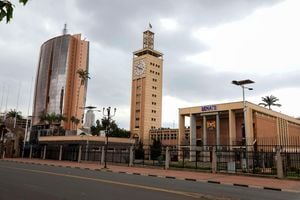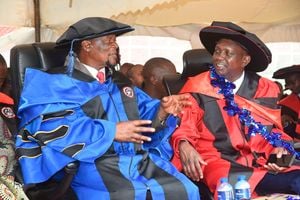Why we need to promote Kenyan science heroes

The late Nobel Peace laureate Prof Wangari Maathai.
The end of the year is a season to reflect. One of the points I am making this time is the source of inspiration for young Kenyans, some of whom expect to receive their KCSE results before the end of the year. These results will inform their further education choices, especially science-related careers.
In a 2018 blog post on www.healthKenya.co.ke., the writer recalls browsing in a supermarket’s book section and unsuccessfully searching for inspirational books on renowned local scientists to motivate a nephew who was a high school student at the time.
The situation has not changed much since then, as internet research for Kenyan science heroes did not bring up the results I wanted. I hoped to see some names such as the late Dr. Calestous Juma, the late Prof. Wangari Maathai and those listed at the Kenya National Academy of Sciences (KNAS). They include the late Thomas Risely Odhiambo, the Academy’s founder, who also established the International Center for Insect Science popularly known as ICIPE. However, unsurprisingly, even the KNAS website stops short of giving details of the work and impact of their esteemed members. It would be great if links and short intros would take readers to more detailed stories.
Kenyan Heroes website
My search listed the Kenyan Heroes website, which briefly profiles some artistic celebrities, corporate executives, entrepreneurs, philanthropists and politicians. There was an exception in Dr Ahmed Kalebi, founder and CEO of the Lancet group of Laboratories. I also came across Peter Thabiti, the Math and Physics instructor who won the Global Teacher Prize 2019.
So where are the scientists at a time when Kenyans are in dire need of knowledge about its scientists, their work, and the impact they have had on our society, economy and people? They are few and far between and rarely profiled. Their work is shared in policy briefs, conferences and highly technical peer-reviewed journals and publications. Sometimes, when it translates to impactful medical, agricultural or other sector interventions, these stories do not remain highly topical unless there is some degree of controversy involved. Even then, they quickly relinquish public attention to politics, sports, entertainment and gossip.
When you ask a young Kenyan to mention even one local scientist, it is unlikely he or she will know anyone. If you are lucky, the ones they learned in the school curriculum such as Albert Einstein, Michael Faraday, Galileo Galilei and Isaac Newton may be recalled. The Kenyatta University Teaching and Referral Hospital’s site had an interesting profile of Kenya’s first nuclear pharmacist, Elizabeth Wangari Itotia. But that is as far as her story shows up.
It is no wonder that a blog post on KIPPRA’s website found that in 2018, only 11.3 percent of students enrolled in universities chose to pursue life and physical sciences compared to arts and humanities at 16.3 percent. Other reasons contributing to the low enrolment in science courses include high cut-off marks, but the upshot is Kenya’s scientist population remains low and the ones that we have had are barely known.
According to the Alper Doger (AD) Scientific Index, there were a paltry 1,410 scientists in Kenya in 2022. At the continental level, the numbers are even more severe. In 2015, the density of scientists in Africa was estimated to be 75 per 1 million. This population had risen to 198 per 1 million by August 2024 out of 1.2 billion people. MIT’s newsletter reported that in comparison, the U.S. has more than 4,000 scientists per 1 million people.
Popularise science
So even as President William Ruto called on the Public Service Commission to ensure that the pay scales of scientists are similar to regional ones, pay may not be the only reason there is a small pipeline of people working towards becoming scientists. We need to promote them more so that their visibility, personality and engagement make them become familiar faces and their stories inspire more Kenyans to become scientists.
To popularise science, we must have great stories that humanise the scientists, make them relatable through their work and its impact and showcase them visually to make them easily identifiable. Their names, images and videos must be common and shared extensively. They should be seen and heard more often across multiple platforms so that school and family conversations refer to them regularly. They need to be taught in school books and conduct tours to share their experiences in student forums, on popular mass media shows and on digital platforms. They should be recognised and rewarded in a structured national program that younger people follow and can relate to.
There are some existing interesting case studies that we can improve upon. The National Museums of Kenya’s Shujaa Stories Initiative developed in partnership with Google Arts and Culture may provide a leg up. At the regional level, Unesco also rolled out the African Heroes initiative, to tell these stories through video gaming. Hon John Kairie’s motion in parliament to set up a science museum should trigger further work to collate the scientific content and materials on our science heroes required to fill it up and make it intensely attractive.
The writer can be reached on [email protected]




